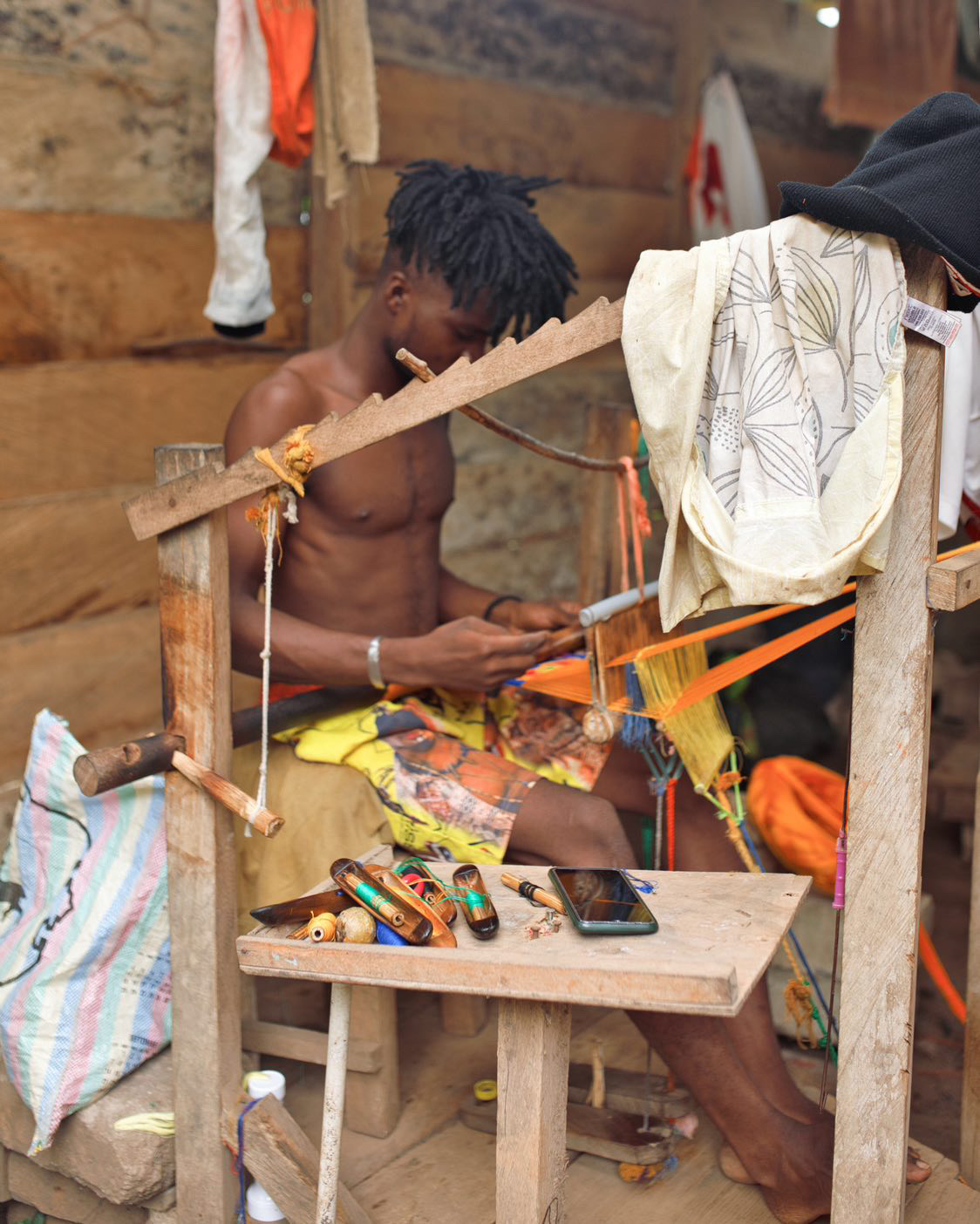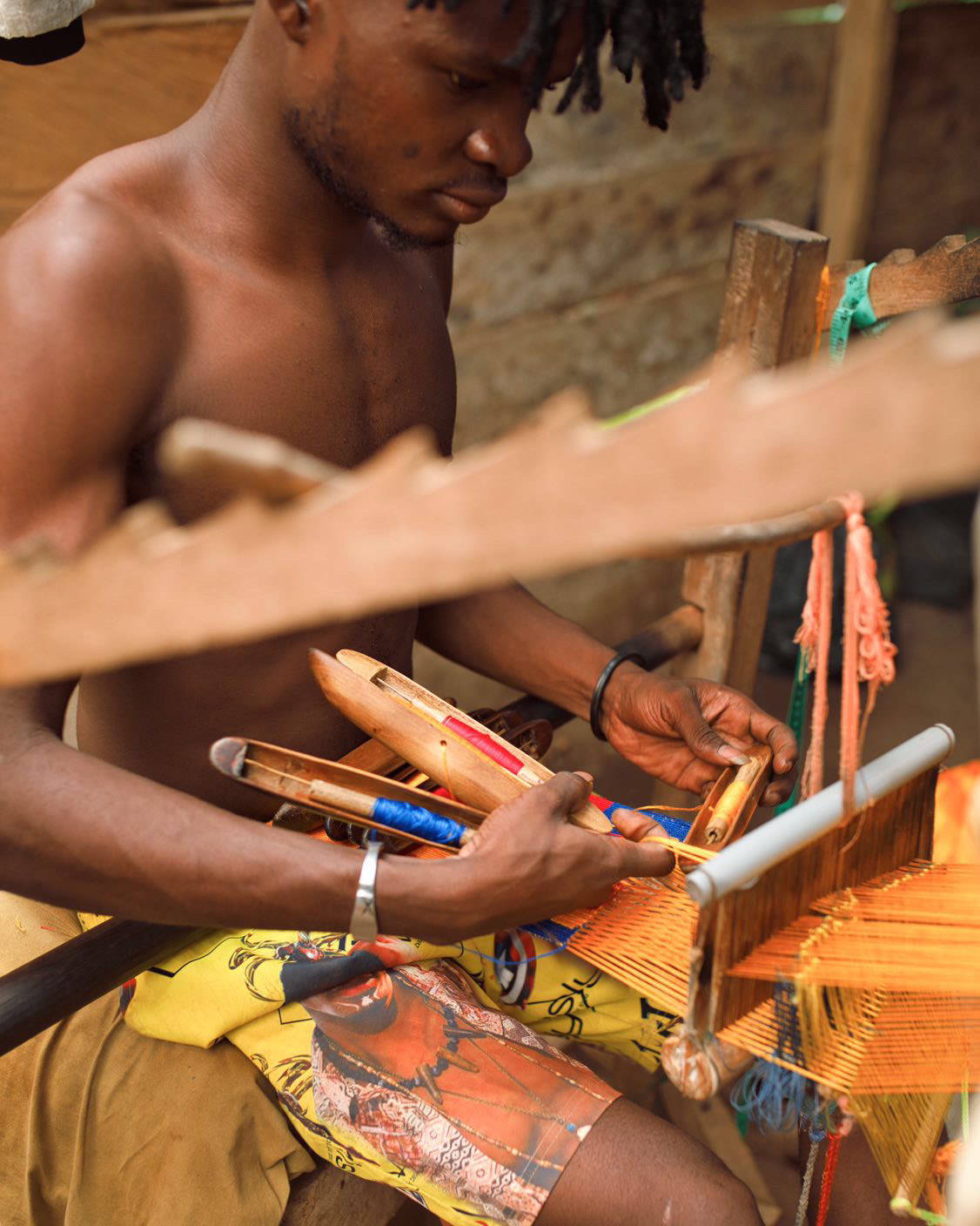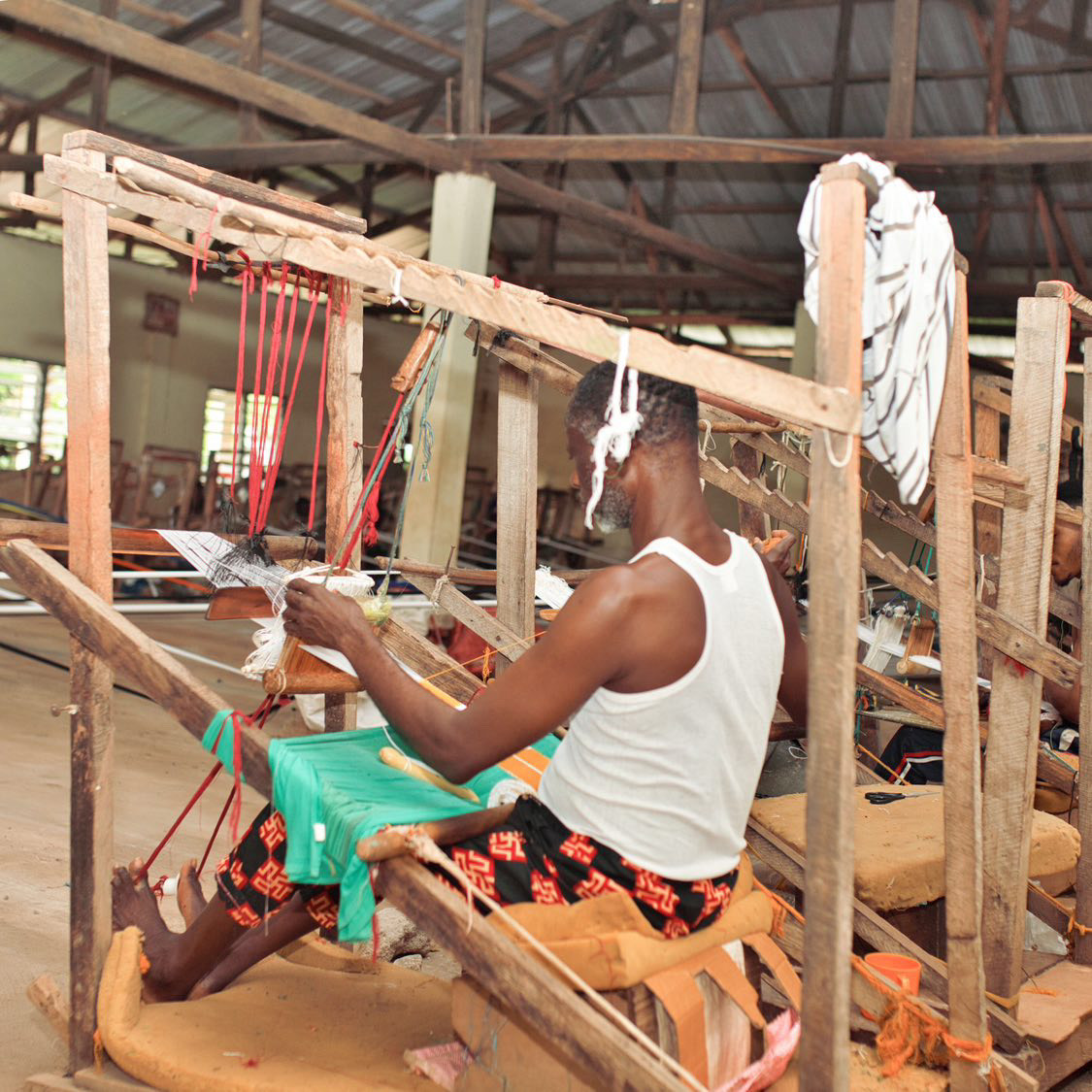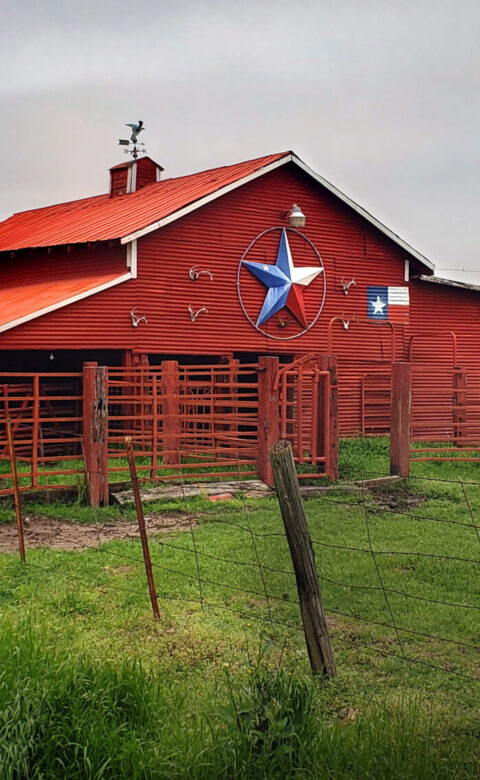Tucked away 18 km off the Kumasi-Mampong Road in Ghana is an ancient African village that has preserved its unique way of life for centuries by creating one of the most popular textiles on the continent — kente. The village of Bonwire (pronounced “bon-ray”) is dedicated to the age-old custom of West African weaving that lies at the core of the Ashanti tribe’s rich traditions.
A visit to the Bonwire Kente Weaving Centre showed me a lively cultural destination where visitors can take a tour to learn about the origins of kente and its production, and in the process support the local community. A colourful and vibrant traditional fabric worn for important celebrations and occasions, kente is the national fabric of Ghana; and Bonwire is known throughout the country as its birthplace.
Kente was developed in Ghana during the 17th century AD by the Ashanti Kingdom. It continued an ancient tradition of African weaving that can be traced back even further to West African kingdoms between 300 AD and circa 1600 BC, with remnants and relics of this weaving practice having been discovered. More distant still, archaeological excavations have revealed that weaving instruments such as spindle whorls and looms were used in the Meroë Empire in the Kingdom of Kush (modern-day South Sudan) from 800 BC–300 AD.

The tale I was told of kente’s history comes from a local legend. Having repeated this folklore countless times, Ghanaians believe this myth to be more than a children’s bedtime story; it is regarded as fact.
Once upon a time…
In the village of Bonwire, a man called Ota Karaban and his friend, Kwaku Ameyaw took weaving classes from a spider that was designing its web. They attempted to imitate the spider’s patterns by weaving a colourful piece of raffia fabric. They were summoned by Bobie, their Nana (chief), who spread the news far and wide about this achievement. As legend tells it, the news eventually reached the paramount chief of the Ashanti people, the Asantehene. He summoned Nana Bobie, Ota and Kwaku to present this textile to the great court. The Asantehene was so amazed by this fantastic fabric that he immediately declared it to be the national cloth for all Asantis (members of the Ashanti tribe).
He believed that this cloth was sacred and couldn’t be worn at any ordinary time or place. For this reason, he announced to his people that it must only be donned for special occasions such as weddings, festivals, funerals and naming ceremonies. Ota and Kwaku were immediately promoted and given the task of making the Asantehene’s royal robes. Subsequently, Bonwire was turned into a weaving village which would make fabrics for all Asantis to wear. Production greatly increased and the name of this fabulous new fabric subsequently became “kente” referencing its basket-like pattern (the word ‘kenten’ meaning basket).

Kente is an indigenous Ashanti handicraft that has gained widespread popularity across the globe. There are many kinds of kente fabric, each having its own unique name and symbolism, with each revealing an aspect of the Ashanti Kingdom’s rich history, culture and social practice passed down through generations. Kente was declared the national cloth of Ghana when the country attained independence from British Colonialism on 6 March 1957, becoming the first African country to do so.
It’s important to remember that kente’s purpose is not beauty alone; instead, it’s a symbol of African unity, oneness and togetherness. Kente represents a cultural imperative where the weaver derives meaning from philosophical concepts, moral values, oral literature, human behaviour, individual achievements, African proverbs, local animal life and the social code of conduct within the community.
Aesthetically, the attractiveness of kente fabric is derived from its meaningful colour, with hues chosen for their visual and symbolic effects. A weaver’s colour choice is also influenced by their personal preference or their tradition. Gender, too, plays a great determining factor in colour selection. Traditionally, women preferred turquoise, mustard, purple and pink while men preferred navy, black, orange, red and forest green.

Presently, there are over 50 types of kente patterns with the most expensive and elaborate of all designs in the Asanti culture being the Adwene Asa which translates to ‘my skills are exhausted’. This kente design is a pattern where the strips join together all the known designs. It was created exclusively for the Asantehene (paramount chief) who is regarded to be the king of the Asantis, and only one master craftsman is allowed to weave it. There are rare occasions when kente weavers make new designs for the sake of honour. For instance, in 1960 Dr Kwame Nkrumah, Ghana’s first president and his Egyptian wife, Madam Fathia had a fabric designed for them called Fathia Fata Nkrumah — meaning ‘Nkrumah merits Fathia’.
Today, Bonwire is the home of hundreds of kente weavers. While visiting I learned about the history and practice of weaving and watched artisans in action, as weavers operated traditional looms with their hands and feet.
The treadle beneath the feet of the weaver separates the vertical threads of the warp, while a shuttle passing from the left hand to the right hand in deft movement inserts the horizontal weft threads between them. Each of the parts of the loom, like the distinctive cloth motifs they create, has a symbolic significance and is accorded respect.
Concurrent with the movement of the kente loom is its percussive music, a familiar tune to weavers and locals of ‘kro-hin-kro… kro-hin-kro.’ This soothing, repetitive rhythm is made by reverberating shuttles as they intertwine the coloured yarns smoothly over one another to produce the dazzling eight-foot-long by four-inch-wide strips of cloth. Afterwards, the strips are sewn together to make the required fabric sizes.
A variety of kente fabrics can be obtained from many shops in Bonwire, with weaving as the main source of livelihood here. These weavers have created a community around their skill and are working to preserve their age-old tradition through advocacy campaigns and teaching about their craft. For lovers of the art of African fabrics, kente is sensationally stunning — but it’s also full of meticulous skill and cultural meaning.








